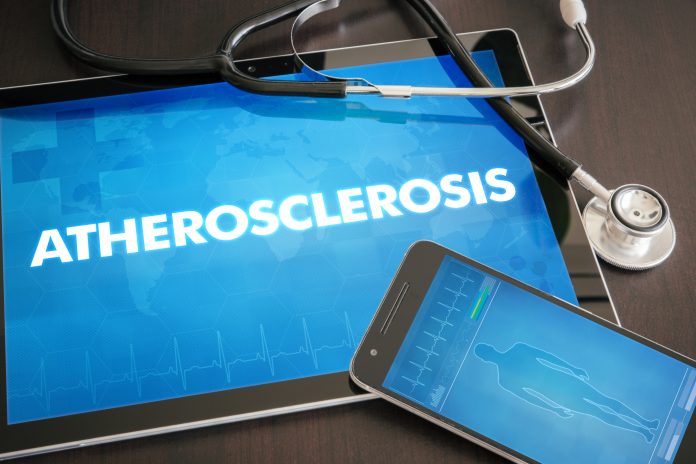Cecilia Van Cauwenberghe from Frost & Sullivan’s TechVision Group explores the emerging role of tumour necrosis factor receptor-associated factor 6 including the challenges and opportunities in this vein
Both inflammatory and immune signalling have been recognised as a foundational root in broad spectrum of cardiovascular pathologies. Recent studies exploring the emerging role of tumour necrosis factor receptor-associated factor 6 (TRAF6)- nuclear factor kappa B (NF-κB) signaling axis have established a clear relation between these associated factors and cardiovascular conditions, including atherosclerosis, ischemic heart disease, heart failure, hypertrophic cardiomyopathy (HCM) and sepsis-induced cardiomyopathy, among many others (Abdullah et al., 2018).
According to the authors, a deeper knowledge around cardiac inflammation and heart disease have allowed to introduce the TRAF6 signaling axis as the core factor, directly related to the pathophysiology of heart disease. Such a profound understanding is driving to the developing of new therapeutics that proposes TRAF6 as a novel, druggable target in treating cardiovascular disease incurred by inflammatory processes. By blocking TRAF6 cardiac dysfunction could be significantly attenuated.
Furthermore, TRAF6 has been suggested as an essential regulator of human stem cell (HSC) homeostasis through basal activation of NF-κB. Indeed, studies have demonstrated that hematopoietic-specific deletion of TRAF6 results in impaired HSC self-renewal while revealing changes in adaptive immune signaling, innate and NF-κB immune signaling. These factors indicate that TRAF6 critically is required for HSC homeostasis (Fang et al., 2018).
Innovations and solutions
TRAF6 is also being assessed as a biomarker of pathogenesis in immune thrombocytopenia (ITP), an acquired disease associated with several pathogenetic mechanisms. According to recent studies, TRAF6 levels were observed to be higher than healthy controls, therefore, suggesting a strong correlation between TRAF6 and ITP pathogenesis (Asoglu et al., 2018).
Yes-associated proteins (YAP) are known to modulate the activation of endothelial cells while suppressing vascular inflammation through preventing TRAF6- mediated NF-κB activation. This fact presents the remarkable importance in limiting the severity of sepsis-induced inflammation and organ failure (Lv et al., 2018). Based on this understanding, the strength and magnitude of endothelial activation and vascular inflammation could be precisely modulated opening a new avenue for novel therapeutics (Liu et al., 2018).
Returning to atherosclerosis, understood as one of the most relevant underlying causes of cardiovascular diseases, is driven by costimulatory CD40-CD40L receptor/ligand. Whereas the inhibition of CD40-CD40L strongly reduces atherosclerosis, long-term administration of CD40-CD40L inhibitors results in immune suppression and/or thromboembolic events. However, CD40 recruits TRAF6 to elicit intracellular signaling. Small molecule inhibitors (SMIs) that selectively block CD40-TRAF6 interactions, better known as TRAF-STOPs, play a leading role in ameliorating both atherosclerosis and restenosis, by reducing inflammation, without causing immune suppression (Seijkens et al., 2018).
Final remarks
TRAF6 mediates several endothelial dysfunction mechanisms. An in-depth understanding of TRAF6 interaction with immunomodulators is opening novel paths for therapeutic interventions, helping to ameliorate atherosclerosis, cardiovascular disease and metabolic disorders by targeting TRAF6.
Acknowledgements
I would like to thank all contributors from the industry involved with the development and delivery of this article from the TechVision Group at Frost & Sullivan.
Further reading
Abdullah, M., Berthiaume, J.M. and Willis, M.S., 2018. Tumor necrosis factor receptor-associated factor 6 as a nuclear factor kappa B-modu- lating therapeutic target in cardiovascular diseases: at the heart of it all. Translational Research, 195, pp.48-61.
Asoglu, V., Umit, E.G. and Demir, M., 2018. A biomarker and therapeutical target in immune thrombocytopenia: TNF receptor-associated factor 6. Biomarkers in medicine, 13(01), pp.27-31.
Fang, J., Muto, T., Kleppe, M., Bolanos, L.C., Hueneman, K.M., Walker, C.S., Sampson, L., Wellendorf, A.M., Chetal, K., Choi, K. and Salomonis, N., 2018. TRAF6 mediates basal activation of NF-κB necessary for hematopoietic stem cell homeostasis. Cell reports, 22(5), pp.1250-1262.
Liu, R., Shen, H., Wang, T., Ma, J., Yuan, M., Huang, J., Wei, M. and Liu, F., 2018. TRAF6 mediates high glucose-induced endothelial dysfunction. Experimental cell research, 370(2), pp.490-497.
Lv, Y., Kim, K., Sheng, Y., Cho, J., Qian, Z., Zhao, Y.Y., Hu, G., Pan, D., Malik, A.B. and Hu, G., 2018. YAP controls endothelial activation and vascular inflammation through TRAF6. Circulation research, 123(1), pp.43-56. Seijkens, T.T., van Tiel, C.M., Kusters, P.J., Atzler, D., Soehnlein, O., Zarzycka, B., Aarts, S.A., Lameijer, M., Gijbels, M.J., Beckers, L. and den Toom, M., 2018. Targeting CD40-induced TRAF6 signaling in macrophages reduces atherosclerosis. Journal of the American College of Cardiology, 71(5), pp.527-542.
Cecilia Van Cauwenberghe, PhD, MSc, BA
Associate Fellow and Senior Industry Analyst
TechVision Group, Frost & Sullivan











